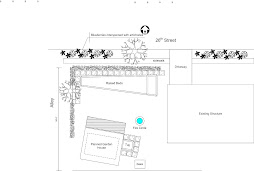I've been eking out a pot of tomato sauce here and there, but mostly nowhere, snitching instead and hoping for enough of an Indian Summer surge to enable some canning in earnest. We'll see.
Squash and peppers limp along similarly this year. I expect maybe a bushel or two of winter squash. Even the zucchini have been reserved this year...I'm almost keeping up with them.
Beans are another story...after a very slow start and several re-plantings early on, they're yielding nicely...all of my varieties. And, probably owing to the cool wet weather, the scarlet runners have been especially tender. My 20 year old son, in an inexplicable burst of homesteader-like energy, canned up 13 quarts of them one day. He did a fine job of things and even cleaned up after himself. I'm still scratching my head and wondering if I should perhaps have a doctor look at him.
Fall is always a sweet sort of panic for me. All things come ripe and demand attention mostly by threatening horrible waste if ignored. The winter rains loom too, reminding me of all the chores left to do. Almost as if summoned, 'work work' also seems to heat up come September or so. I buckle down, pull late nights, cram tasks into every nook of the day, meanwhile stealing as much of the waning summer fun as I can hiking or kayaking, and try not to worry too much or just go plain crazy. It never works, and then it sort of does, and then the rain comes and I am happy for what I managed to finish and cross with myself for what I did not. A better settling of scores is always warranted I think looking back over years of the same restlessness.
Green tomatoes this year are bound to break me. No matter how many old boxes I unearth in my garage, I cannot image there are enough empty Ball jars in my possession to hold the probably hundreds of pounds of wannabe Roma's, Early Girl's, Purple Cherokee's, etc. bearing down upon me. I'll do what I can, but am wondering if maybe it's possible to somehow make biodiesel, or perhaps settle the national debt with the remainder, or somehow get the IRS to accept them in lieu of taxes next year.
I went to a wedding last weekend, an Oregon wedding (in the rain), for a couple of true farm geek friends. They were tying the knot and simultaneously celebrating their acquisition of a lovely patch of land with an old farmhouse on it and a barn or two where they will make their life together. It was a good wedding, the best I can remember, and for reasons not much to do with the extravagance of the preparations. Bride and groom were simply dressed: baggy pants and a new pair of workshoes for the groom and a pretty cotton wrap for the bride. They performed their own ceremony on the porch of the farmhouse and offered a blessing to each other, to the land, and to the guests in attendance all of whom stood and watched adoringly in the slow Oregon rain. A small tribe of children composed and sang a song to seal the deal. I hope they're happy for a long time to come. I suspect they will be. I know they made a lot of other people happy that day at least and things like that tend to come around again. I thought about giving them green tomatoes as a wedding present, but in the end could figure no sober way of convincing myself of the notion and so offered up a new beehive for their place instead.
I'll check back with them later and at least give them an opportunity to trade the hive out for tomatoes...just in case.
My own bees, happily, came through with a bounty this year. After the cold start to the summer, this was an unexpected pleasure. I took about 70 lbs from the two hives and left them more than enough to see the winter through.
Certainly, there must be at least one recipe out there consisting mainly of honey and green tomatoes.

